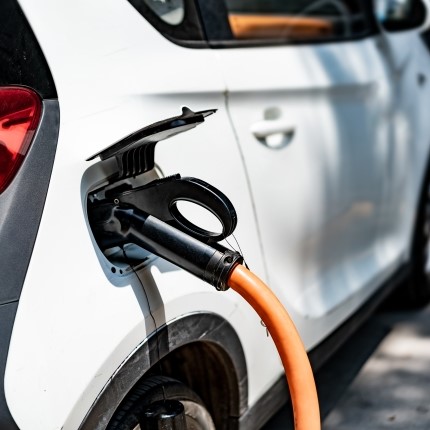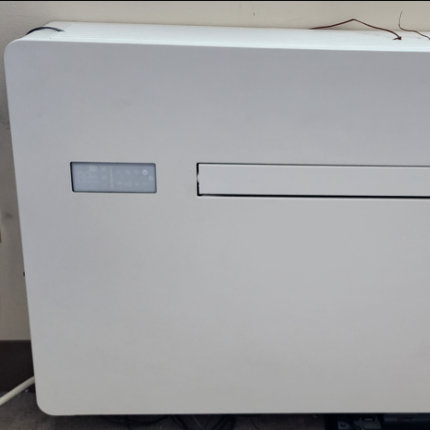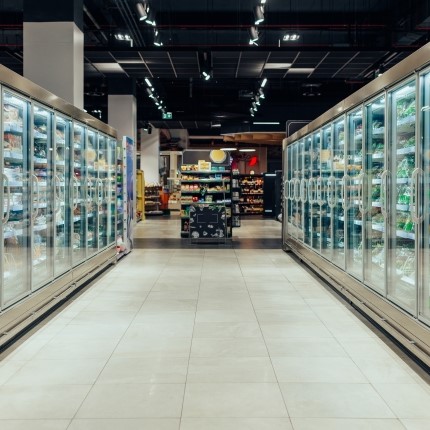This post complements our quarterly research newsletter, which features updates on CEE's research projects. Sign up to get this information in your inbox.
Upper Midwest Inter-tribal EV Charging Community Network
 Background: This project will broaden use and access to electric vehicles (EV) for Tribal communities in the Upper Midwest by deploying and assessing EVs, charging infrastructure, and outreach. The project team will also create a template based on their findings so that other communities can replicate this work. CEE will lead analysis of EV use and charging infrastructure metrics to quantify emissions reductions and the total cost of operation.
Background: This project will broaden use and access to electric vehicles (EV) for Tribal communities in the Upper Midwest by deploying and assessing EVs, charging infrastructure, and outreach. The project team will also create a template based on their findings so that other communities can replicate this work. CEE will lead analysis of EV use and charging infrastructure metrics to quantify emissions reductions and the total cost of operation.
Update: The Standing Rock Sioux community has new level 2 public chargers available for public use. The Electric Nation team installed a charger at the Sitting Bull College in Fort Yates, ND, and at the Grand River Casino in Mobridge, SD. The Standing Rock Sioux tribe is now operating five electric Ford F-150 trucks and an electric Ford transit van, and the Red Lake Nation has deployed five Ford F-150 trucks, four Volkswagen ID.4s, and an electric all-terrain vehicle. CEE is tracking the usage of the new charging infrastructure and fleet EVs to quantify the impacts of this project on the Tribal communities.
Visit the Electric Nation website to learn more about the project
This project is funded by the Department of Energy, under Award No. DE-EE0009865.
Packaged terminal air conditioner replacement field study
Background:  This project will determine the energy savings potential in Minnesota for cold climate heat pump systems that can replace or displace heating and cooling operation by packaged terminal air conditioning (PTAC) systems. The project team will conduct a market scan to determine available products. Systems will be selected for a field study in all-electric buildings that contain PTACs and compared against the baseline heating and cooling equipment to determine overall energy savings and system performance and will provide ECO recommendations based on the results.
This project will determine the energy savings potential in Minnesota for cold climate heat pump systems that can replace or displace heating and cooling operation by packaged terminal air conditioning (PTAC) systems. The project team will conduct a market scan to determine available products. Systems will be selected for a field study in all-electric buildings that contain PTACs and compared against the baseline heating and cooling equipment to determine overall energy savings and system performance and will provide ECO recommendations based on the results.
Update: Project staff have identified multiple cold climate heat pump technologies to field-test across three to four buildings over the next two heating seasons. These include a mix of packaged terminal heat pumps (PTHPs), split terminal heat pumps (STHPs), and window heat pumps. The team has completed interviews with multiple key industry professionals to identify market barriers and learn more about product specifics. CEE is currently recruiting buildings to participate in a field demonstration. If you live in a multifamily building that is heated with electricity, please reach out to Alex Haynor at ahaynor@mncee.org.
Contact staff about project participation
This project is supported by a grant from the Minnesota Department of Commerce, Division of Energy Resources through the Conservation Applied Research and Development (CARD) program, which is funded by Minnesota ratepayers.
Realizing savings from floating suction pressure control in Minnesota's grocery stores
 Background: This project will conduct field monitoring of floating suction pressure control in grocery store refrigeration systems in Minnesota. Project staff will assess the savings, cost, adaptability, and scalability of this control strategy that a CARD-funded market study recently identified as a top priority. The monitored results will be combined with detailed assessments of market issues and technical site-specific variables affecting costs and savings to develop detailed recommendations for cost-effective ECO program promotion and a new TRM measure.
Background: This project will conduct field monitoring of floating suction pressure control in grocery store refrigeration systems in Minnesota. Project staff will assess the savings, cost, adaptability, and scalability of this control strategy that a CARD-funded market study recently identified as a top priority. The monitored results will be combined with detailed assessments of market issues and technical site-specific variables affecting costs and savings to develop detailed recommendations for cost-effective ECO program promotion and a new TRM measure.
Update: Research staff interviewed small and large grocery store representatives to assess their familiarity with and perspectives on floating suction pressures. Smaller store owners were less familiar with the strategy but generally open to trying it, while larger store owners were split on the risks and benefits of the technology. The project team is working on detailed test plans and scopes of work for two potential field demonstration sites. Field monitoring will begin in January 2025. The team is still seeking an additional grocery store to serve as a field-test site. If you know of a grocery store operator interested in piloting floating suction pressure control, please contact Grant Baumgardner at gbaumgardner@mncee.org.
Contact staff about pilot program participation
This project is supported by a grant from the Minnesota Department of Commerce, Division of Energy Resources through the Conservation Applied Research and Development (CARD) program, which is funded by Minnesota ratepayers.
ComEd Whole Home Electric monitoring and verification overlay
 Background: ComEd’s Whole Home Electric program focuses on income-eligible residential electrification within their service territory in northern Illinois. CEE’s research team will install monitoring equipment on the newly installed HVAC equipment and electric appliances to monitor their performance through a period of up to 14 months. The collected data will then be analyzed to characterize these systems and determine the key drivers of positive program outcomes.
Background: ComEd’s Whole Home Electric program focuses on income-eligible residential electrification within their service territory in northern Illinois. CEE’s research team will install monitoring equipment on the newly installed HVAC equipment and electric appliances to monitor their performance through a period of up to 14 months. The collected data will then be analyzed to characterize these systems and determine the key drivers of positive program outcomes.
Update: After establishing a detailed monitoring plan in collaboration with the Whole Home Electric team, CEE is currently identifying research-eligible homes in the Whole Home Electric pipeline to partner with. The research team expects to start installing monitoring equipment on up to 30 homes this fall. Monitoring will continue for approximately a year so that seasonal factors can be studied.
This project is funded by ComEd's Whole Home Electric program.
Savings potential of dual fuel heat pump rooftop units and energy recovery ventilators in Minnesota
 Background: CEE is the implementer of Minnesota’s Efficient Technology Accelerator (ETA), a statewide market transformation program that accelerates deployment and reduces the cost of emerging and innovative efficient technologies. A key technology in this portfolio is next gen rooftop units (RTUs), packaged heating and cooling units that use energy efficient technology to effectively heat and cool a commercial space, reducing energy consumption and emissions. Heat pump technology and energy recovery ventilators (ERVs) are two examples of technologies that can contribute to a next gen RTU.
Background: CEE is the implementer of Minnesota’s Efficient Technology Accelerator (ETA), a statewide market transformation program that accelerates deployment and reduces the cost of emerging and innovative efficient technologies. A key technology in this portfolio is next gen rooftop units (RTUs), packaged heating and cooling units that use energy efficient technology to effectively heat and cool a commercial space, reducing energy consumption and emissions. Heat pump technology and energy recovery ventilators (ERVs) are two examples of technologies that can contribute to a next gen RTU.
Update: The Next Gen RTU initiative team recently published a report on the energy and bill savings achievable through the use of dual fuel heat pump RTUs and ERVs in Minnesota’s commercial buildings. The goal of this analysis is to quantify the potential savings across eight common commercial building types, which represent 72% of the commercial buildings in the state. By focusing on Minnesota’s cold climate and building stock, the study evaluates the performance of these technologies individually and as a combined system. The model shows dual fuel heat pump RTUs and ERVs can achieve substantial energy savings, with reductions of over 40% compared to standard units across the examined building types.
Learn more about ETA's Next Gen RTU initiative
Minnesota's Efficient Technology Accelerator is funded by investor-owned utilities and administered by the Minnesota Department of Commerce, Division of Energy Resources.
MEDIA CONTACT
Tim Hanrahan, thanrahan@mncee.org
